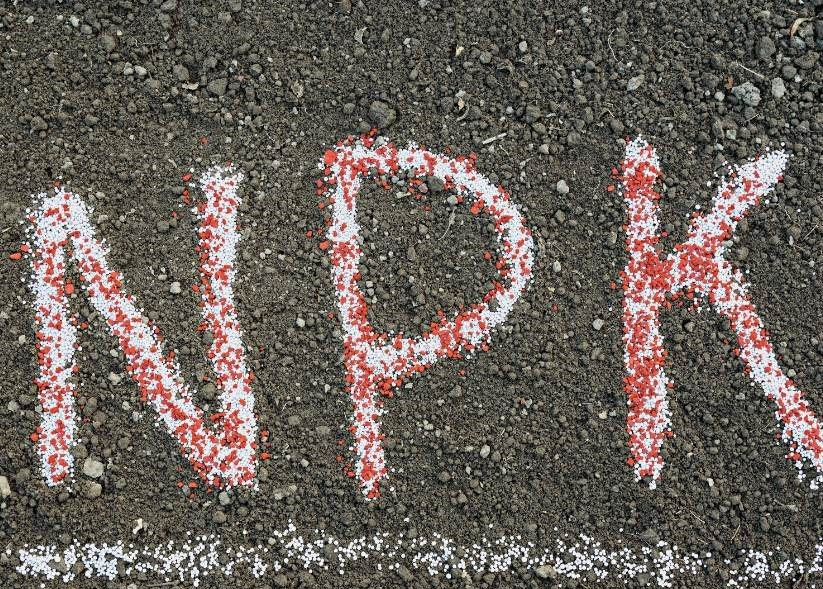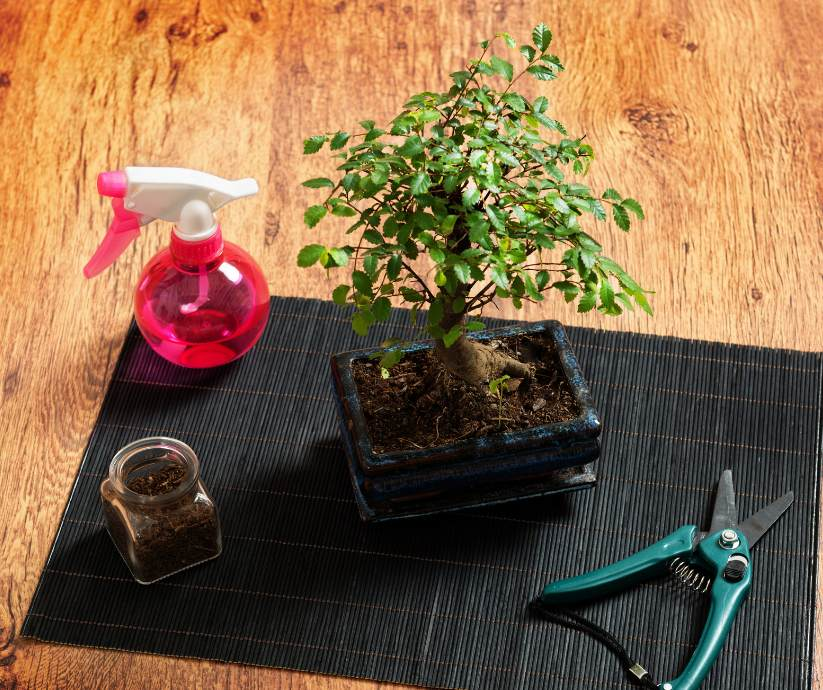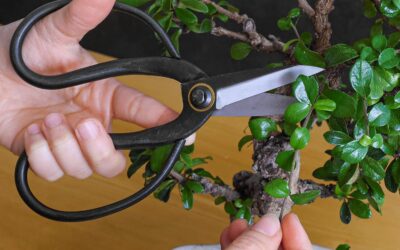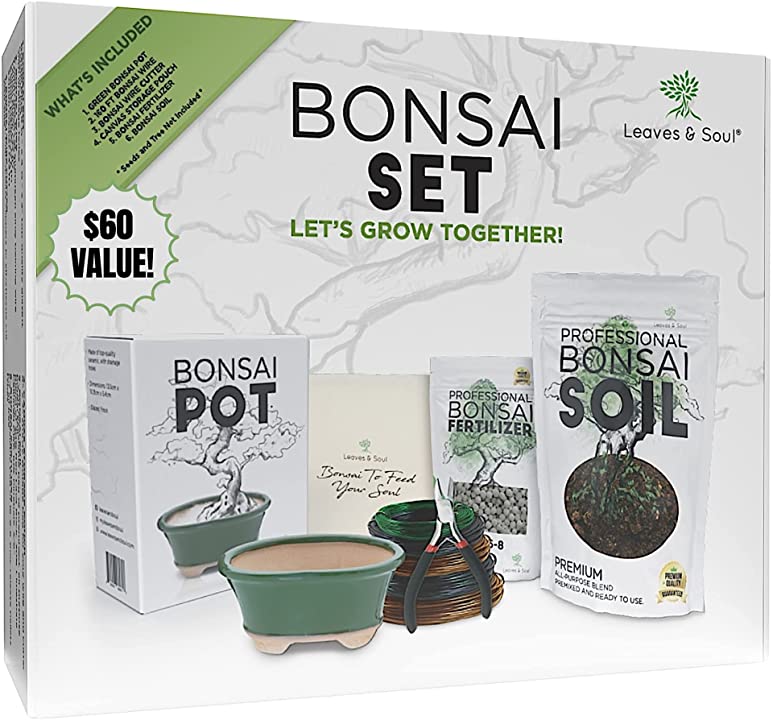Fertilizers play a vital role as one of the lifeblood of bonsai trees. Confined in a pot, we must supply the essential nutrients they can’t access naturally in such limited spaces. The choice between an Organic vs Chemical Bonsai Fertilizer isn’t a trivial matter—it’s about customizing your approach to meet the unique needs of your bonsai.
Both options bring distinct benefits and considerations to the table, influencing not just immediate and balanced growth but the long-term vitality of your plant.
Ready for a bonsai boost? Let’s dig into the nitty-gritty of fertilizers, where every choice adds a dose of real vitality to your bonsai!
Bonsai’s Nutrient Needs

Much like us needing a balanced diet, every bonsai species has its version of nutritional essentials crucial for their overall well-being. Imagine these essentials as the bonsai’s vitamins – Nitrogen, Phosphorus, and Potassium (NPK). Each element plays a specific role in nurturing a healthy and vibrant bonsai.
First up is Nitrogen, the growth booster. It’s like the energy drink for your bonsai, promoting the development of leaves and stems, ensuring your miniature tree stands tall and lush.
Then there’s Phosphorus, the hero behind the scenes. It fosters a robust root system and the blossoming of beautiful flowers, contributing to the overall aesthetic appeal of your bonsai. Lastly, Potassium acts as the all-around caretaker, functioning as a shield against diseases and ensuring the smooth functioning of essential processes.
Recognizing the signs of nutrient deficiency is also necessary. Yellowing leaves can indicate that there are potential nitrogen deficiencies or other imbalances. Stunted growth signals a broader nutrient issue, necessitating a nuanced investigation. Leaf discoloration, whether in brown spots or unusual hues, unveils the bonsai’s subtle language of nutrient needs.
These signs are the bonsai’s gentle reminders that a little nutrient boost could enhance its health.
Organic Bonsai Tree Fertilizers
If you appreciate a slow, steady journey and prioritize soil health, use organic fertilizer to fertilize bonsai trees. Derived from living organisms or natural substances, they keep things simple, mirroring nature’s way of providing essential nutrients.
Advantages
- Gradual Nutrient Release: Ensures a steady, balanced nutrient supply, minimizing excess risk.
- Diverse Nutrient Composition: Mimics the varied diet needed for bonsai’s healthy growth and vitality.
- Environmentally Responsible: Derived from natural sources, contributing to eco-friendly horticulture.
- Enhanced Soil Structure: Improves soil health, fostering healthy root growth.
- Reduced Chemical Stress: Gentle on roots, minimizing the risk of over-fertilization and chemical stress.
Drawbacks
- Results take time to show: Organic fertilizers create and work at their own pace, requiring patience for visible growth.
Example/s: Fish emulsions, Seaweed extracts
Chemical Bonsai Fertilizers
Chemical bonsai fertilizers, often labeled as synthetic or inorganic, take a more direct route to feeding your bonsai. These synthetic fertilizers are formulated with precise nutrient ratios, offering a quick and efficient solution for your miniature green companion.
Advantages
- Swift Results: Chemical fertilizers are like the espresso shot for your bonsai. They deliver nutrients rapidly, giving your tree an immediate boost.
- Precision Nutrition: These fertilizers have a specific nutrient breakdown, allowing you to precisely tailor your bonsai’s diet.
- Compact Packaging: They are concentrated, requiring less volume for the same nutrient impact. It’s like the bonsai nutrient package in a small, potent bottle.
Drawbacks
- Potential Soil Imbalance: Continuous use of a chemical fertilizer may lead to an imbalance in the soil’s nutrient composition over time.
- Environmental Impact: The production and runoff of these fertilizers can have environmental repercussions, affecting surrounding ecosystems.
Example/s: Water-Soluble General Purpose Fertilizer
Fertilization Techniques
When applying organic fertilizers, it’s essential to distribute them evenly across the soil surface. It promotes a gradual release of nutrients, allowing the bonsai to absorb them at its own pace. Applying an organic fertilizer during the growing season, typically in summer, supports the tree’s increased nutrient demand during this active phase. Watering after fertilizing bonsai trees helps nutrient absorption and prevents potential root burn.
For chemical fertilizers, precision is key. Following the manufacturer’s guidelines for application rates is crucial to avoid over-fertilizing, which may harm the bonsai. Typically, they are water-soluble, making them easy to dissolve in water for even distribution. Applying these fertilizers during the growing season and adjusting the frequency based on the specific needs of your bonsai ensures optimal nutrient intake without the risk of nutrient excess.
Regardless of the bonsai tree fertilizer type, monitoring your bonsai’s response is vital. Adjusting the fertilization frequency based on the tree’s growth and health indicators, such as leaf color and overall vigor, ensures a tailored and effective approach to nurturing your miniature masterpiece.
Common Myths and Misconceptions
#1 — Organic Means Slow and Ineffective
Truth: Organic fertilizers release nutrients slowly, promoting a steady and sustained supply. They might take time but they are practical and contribute to long-term soil health.
#2 — Chemical Fertilizers Harm the Environment:
Truth: While overuse can have environmental impacts, when used responsibly, it can be safe. Proper dosage and application are key to minimizing adverse effects.
#3 — Organic Is Always Best for All Plants
Truth: Different plants have different preferences. While some thrive with organic nutrients, others may benefit from the precision of the chemical ones. It’s not a one-size-fits-all scenario.
#4 — Chemical Fertilizers Cause Burn
Truth: Burn occurs when fertilizers are overused or misapplied, regardless of whether they are organic or chemical. Follow recommended guidelines to prevent any burning issues.
#5 — Chemical Fertilizers Are “Chemical” and Unsafe:
Truth: Everything is made up of chemicals. When used as directed, they are safe for plants and, if applied responsibly, for the environment.
#7 — Organic Fertilizers Attract Pests:
Truth: While some organic materials may attract pests, proper application and maintaining a balanced ecosystem can mitigate this risk. It’s more about how you use them than an inherent flaw.
Choosing the Right Bonsai Tree Fertilizer

Picking the perfect fertilizer for your bonsai isn’t rocket science. It’s about understanding your tree’s needs and finding a suitable fertilizer. Let’s keep it simple and get straight to the essentials.
Know Your Bonsai
Different bonsai species- coniferous evergreen, broadleaf evergreen varieties, and deciduous bonsai, have unique nutrient and seasonal requirements. Identify your tree’s species to understand its specific cravings. For example, if you have a Juniper coniferous evergreen bonsai, lean towards an organic fertilizer because they thrive more with the gradual release of nutrients provided by organic options.
Growth Stage Matters
Whether your bonsai species is a young sprout or a mature masterpiece, its nutritional needs change. Consider a well-balanced chemical fertilizer for a young bonsai to support rapid growth. Mature trees may benefit from organic options for sustained health.
Nitrogen, Phosphorus, Potassium: The Trio
These three nutrients are the superheroes for your bonsai’s health. Check the bonsai fertilizer labels to ensure they are in the right balance.
Slow-release or Liquid Fertilizers
When choosing the type of for your bonsai, it’s essential to understand the differences between slow-release and liquid fertilizer options. Slow-release fertilizers, available in various forms like your bonsai fertilizer pellets or solid fertilizer, release nutrients gradually over an extended period, making them suitable for those with busy schedules and promoting sustained growth. In contrast, a liquid fertilizer provides a quicker nutrient boost, ideal for immediate replenishment, but requires more frequent application.
Organic or Chemical: Personal Preference
Some prefer the natural touch of organic, while others prefer the precision of chemicals. Experiments with different organic mixes can be rewarding if you enjoy a hands-on approach.
Experiment, But Not Too Much
It’s okay to test different fertilizers to see what your bonsai loves. If you’re a hands-on person, try creating a custom organic blend and tweaking the ratios based on your observations.
Combining Organic and Chemical Fertilizers
Finding the right balance tailored to your bonsai’s unique characteristics and growth stage is essential for the best results in combining organic and chemical fertilizers. But for starters, a common approach is to use organic fertilizer as a base and supplement it with chemical fertilizer. Start with a ratio of 70% organic to 30% chemical. This balanced starting point provides a good mix of slow-release organic and quickly available chemical nutrients.
After setting the initial ratio, closely observe your bonsai’s response to this fertilizer combination. You can adjust based on how your bonsai grows and its overall health. If your bonsai is thriving with this ratio, you can continue with it or even slightly increase the organic component for long-term health. If you see limited progress or nutrient deficiencies, consider adding the amount of chemical fertilizer proportion to provide more readily available nutrients. When you notice signs of nutrient excess (such as leaf burn or excessive growth with little refinement), reduce the chemical fertilizer portion.
The Right Path for Your Bonsai
Whether you lean towards the natural touch of organics or the precision of chemicals in bonsai fertilizer, the key is finding what suits your plant best. Consider factors like species, bonsai growth, and your philosophy on the best fertilizer for bonsai care.
Remember, it’s not a one-size-fits-all scenario. The goal is a happy, thriving bonsai, achieved by making an informed decision based on your individual preferences and bonsai care goals.
So, embrace the simplicity of informed gardening, demystify those myths, and let your bonsai journey be joyous. Here’s to cultivating healthy plants, the perfect bonsai, and a garden full of green happiness!






0 Comments